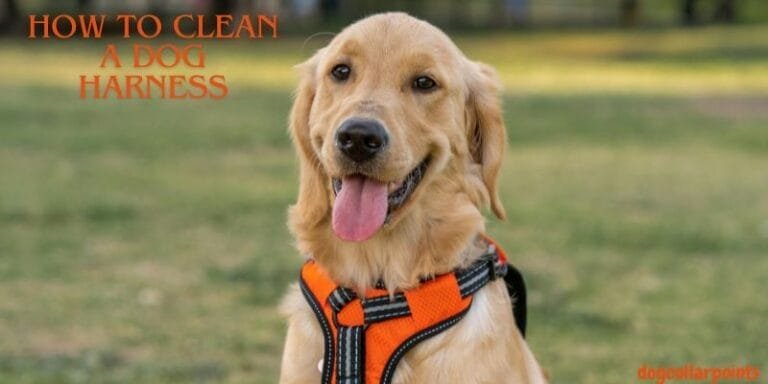How to Train a Dog Boundaries with Shock Collar – Guide

Welcome to our blog on how to train a dog boundaries with shock collar, When training our canine companions, one of the vital skills to teach is respecting boundaries. Whether it’s to keep them safe from traffic or to prevent them from straying into off-limits areas, boundary training is an essential aspect of responsible dog ownership.
In today’s focus on advanced training tools, many dog owners ponder how to train their dogs effectively using a shock collar. This blog post delves into that topic, providing a responsible and humane guide to using a shock collar for boundary training.
The Importance of Boundary Training for Dogs
Boundary training is not just about setting physical limits; it involves nurturing a sense of discipline and understanding within your dog, contributing to their overall obedience and safety. A well-trained dog that recognizes boundaries will be less likely to run into dangerous traffic, bother neighbors, or get into unsafe situations when unsupervised. By setting these ground rules, you also strengthen your bond with your pet and reinforce your role as the pack leader.
Why Use a Shock Collars For Boundary Training
Shock collars, when mentioned, can elicit a range of emotions due to their controversial nature. However, when used correctly and humanely, they can be beneficial for enforcing boundaries. Shock collars can provide immediate feedback to your dog, often more consistent than human reactions. They can also allow for training in situations where other methods are not feasible, such as when your dog is at a distance. The aim is not to hurt or scare your dog but to create a clear association between certain behaviors and consequences.
Setting Up Boundaries with Shock Collars:
Proper boundary setup is crucial for effective training. Follow these steps to establish clear boundaries:
- Define Boundaries: Determine the area where you want to establish boundaries, such as the perimeter of your yard or specific rooms in your home.
- Install Boundary Flags: Place visual markers, such as flags or stakes, along the boundary line to help your dog visualize the limits.
- Adjust Collar Settings: Set the shock collar to the appropriate stimulation level, starting with the lowest setting and adjusting as needed based on your dog’s response.
Safety Considerations
Before you begin the process of boundary training with a shock collar, it’s critical to understand how to use it safely. The safety and well-being of your dog are paramount:
- Consult a professional: Shock collars should only be used with consultation from a professional dog trainer or behaviorist.
- Collar fit: Ensure the collar is properly fitted; it should not be too tight or too loose so that the contact points do not contact the skin.
- Training sessions: Training should be limited to short sessions so the dog doesn’t become stressed or overstimulated.
- Understanding settings: Familiarize yourself with the collar’s settings to ensure using the lowest effective stimulation level.
- Health check: Always ensure your dog is healthy before using a shock collar, as the stress from the training can exacerbate health issues.
Step-by-Step Training Process
Let’s explore the step-by-step process to responsibly train your dog using a shock collar for boundary training:
1. Introducing the Shock Collar
Introduce the collar without using the shock feature. Let your dog wear the turned-off collar around for a few days to get comfortable with it. This is essential to ensure that your dog only associates wearing the collar with receiving corrections.
2. Setting Boundaries and Commands
Start by establishing clear physical or visual boundaries your dog should not cross. Use consistent commands such as “stop” or “stay” to signal your dog that they are approaching an off-limits area. Begin this training without using the collar, leash, and voice controls.
3. Positive Reinforcement Techniques
Positive reinforcement is a crucial aspect of any training process. Whenever your dog obeys a command or respects a boundary, reward them with treats, praise, or play. Positive reinforcement helps in reinforcing good behavior without causing stress or fear.
4. Gradual Adjustment of Collar Intensity
When you start using the shock function, begin at the lowest setting. Only use the shock collar when your dog attempts to cross a set boundary, accompanied by the appropriate command. If the lowest setting does not get the dog’s attention, gradually increase the intensity until you find a level that works without causing distress.
Common Mistakes to Avoid
During the training process, certain common mistakes should be avoided:
- Over-reliance on the Shock Collar: The shock collar should not be your only training tool. Blend its use with other methods like voice commands and positive reinforcement.
- Inconsistent Training Approach: Consistency is key. Always use the same commands and rewards to prevent confusion for your dog.
- Neglecting Positive Reinforcement: Do not forget to encourage and reward your dog for good behavior. Positive experiences are more impactful than negative ones.
Fine-Tuning Boundary Training with Personal Experience:
In my years of working with dogs, I’ve found that fine-tuning boundary training is key to long-term success. By incorporating consistent training, positive reinforcement, and gradual adjustments to collar settings, I’ve witnessed remarkable transformations in dogs’ behavior and understanding of boundaries. Each dog is unique, and personalizing training approaches based on individual needs can lead to lasting results.
Conclusion | How to Train a Dog Boundaries with Shock Collar
In closing, boundary training using a shock collar can be done safely and effectively if approached with care, humanity, and the right knowledge. Remember the importance of boundary training and the potential benefits it brings to your pet’s safety.
When using a shock collar, always prioritize your dog’s well-being and comfort, adhere to safe usage guidelines, and blend technological aid with natural positive reinforcement techniques.
Frequently Asked Questions (FAQs)
How do you train a dog to use a boundary shock collar?
Training a dog to use a boundary shock collar involves a gradual and positive approach. Your dog should be introduced to the collar and familiarized with it first. Then, follow the manufacturer’s instructions for setting up the boundaries and begin training sessions using positive reinforcement techniques. Gradually, your dog will learn to associate the warning signals with the boundaries and adjust their behavior accordingly.
Can I use a shock collar to discipline my dog?
No, a shock collar should not be used as a means of discipline. Shock collars are designed to be used as training tools to reinforce boundaries and promote positive behavior. It’s important to rely on positive reinforcement techniques, such as rewards and praise, to encourage desired behaviors in your dog.
How do you train a dog to be boundary?
Training a dog to respect boundaries requires consistent and positive training methods. Start by using flags or visual markers to establish the boundaries. Can be used to encourage your dog to stay in the designated area. Gradually increase the distractions and reinforce the boundaries during training sessions. Consistency and patience are key for successful boundary training.
Is it good to train a dog with a shock collar?
Training a dog with a shock collar can be effective when used properly and responsibly. Using the shock collar as a training aid, not a punishment tool, is important. Always follow the manufacturer’s guidelines and seek professional advice if needed.






